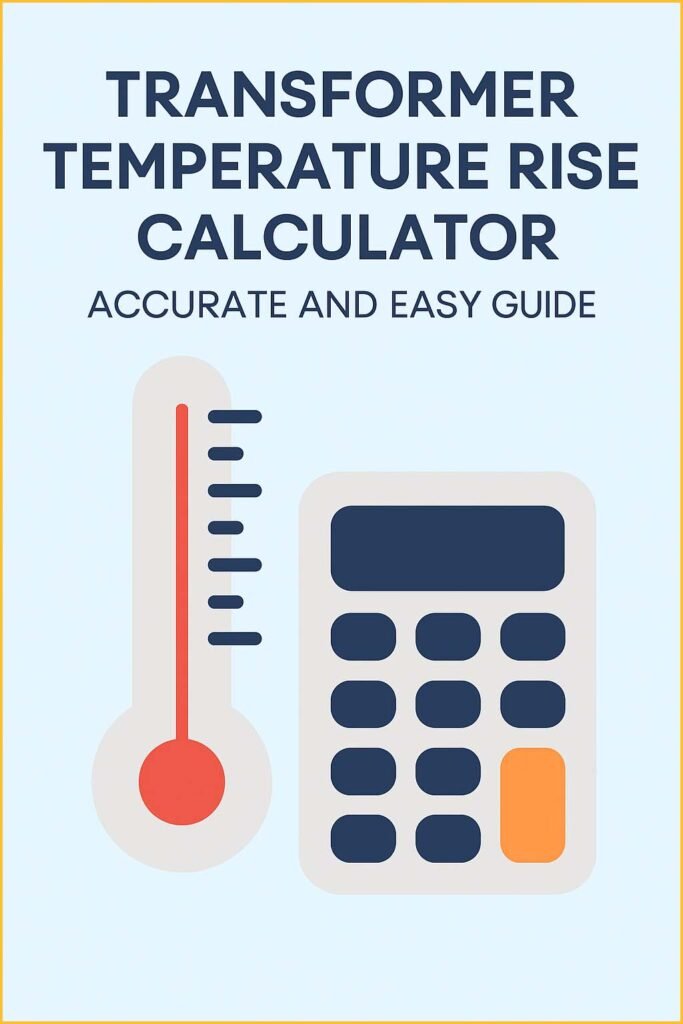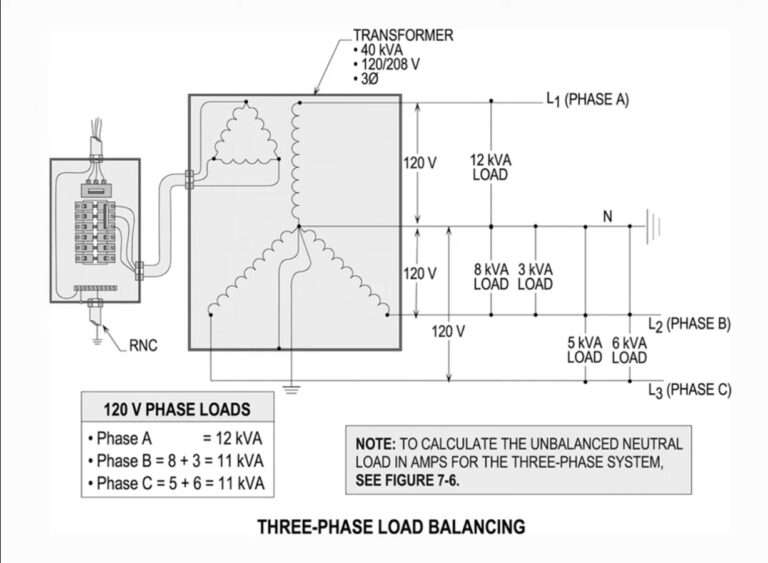Transformer Temperature Rise Calculator: Accurate and Easy Guide
Transformers are critical components in power systems. They transfer electrical energy between circuits while maintaining voltage levels. One of the major concerns for transformers is temperature rise. If a transformer overheats, it can lead to insulation failure, reduced efficiency, and shorter life span. This makes monitoring and calculating temperature rise essential. The Transformer Temperature Rise Calculator is a practical tool that helps engineers and technicians ensure transformers operate safely.

Table of Contents
What is Transformer Temperature Rise?
Transformer temperature rise refers to the increase in temperature of the transformer’s windings and core above the ambient temperature. Essentially, it is the difference between the transformer’s operating temperature and the surrounding environment.
The temperature rise affects:
- Transformer efficiency: Higher temperatures increase resistance in windings, reducing efficiency.
- Insulation life: Excessive heat degrades insulation, causing premature failure.
- Reliability: Overheating can trigger operational issues and even failure.
The IEC 60076 standard and IEEE standards provide limits for temperature rise. Typically, the permissible temperature rise is around 55°C for oil-immersed transformers and 65°C for dry-type transformers.
Transformer Temperature Rise Calculator
Transformer Temperature Rise Calculator
Estimate transformer temperature rise based on load, ambient conditions, and cooling class. Supports ONAN, ONAF, KNAN, and more.
How to Use: Enter transformer load, rated capacity, ambient temperature, and cooling class. The calculator estimates temperature rise using IEC/IEEE thermal modeling and load factor exponentials.
Why Use a Transformer Temperature Rise Calculator?
Manually calculating temperature rise can be complicated. It requires consideration of several factors like load current, transformer rating, losses, cooling method, and ambient temperature. A Transformer Temperature Rise Calculator simplifies this by providing accurate results quickly.
Know more about IEC Standards for Transformer Testing – Complete Guide to IEC 60076 and Testing Procedures
Benefits include:
- Quick assessment of transformer performance under load.
- Early detection of overheating risks.
- Improved maintenance planning.
- Easy comparison between different transformer models.
Key Parameters for Temperature Rise Calculation
Before using a calculator, understanding the input parameters is important. These typically include:
| Parameter | Description |
|---|---|
| Rated Load Current | The full-load current of the transformer in amperes. |
| Load Loss (W) | The power loss in windings due to current flow at full load. |
| No-load Loss (W) | Core loss or iron loss when the transformer is energized but unloaded. |
| Transformer Rating (kVA) | The maximum capacity of the transformer. |
| Ambient Temperature (°C) | The temperature surrounding the transformer. |
| Cooling Type | Natural air (AN), forced air (AF), oil-immersed (ONAN/ONAF), etc. |
Using these parameters, the calculator estimates how much the temperature of windings and oil will rise during operation.
How Transformer Temperature Rise is Calculated
The basic formula for temperature rise is derived from the heat generated due to losses:
Temperature Rise (ΔT) = (Total Loss × Thermal Resistance) + Ambient Temperature
Where:
- Total Loss = Load Loss + No-load Loss
- Thermal Resistance depends on transformer design, cooling type, and insulation
For oil-immersed transformers, the calculation includes:
ΔT = (P_load × R_th winding) + (P_core × R_th core) + Ambient Temperature
For dry-type transformers, cooling is less efficient, so thermal resistance is higher.
Advanced calculators also consider:
- Load factor: Actual load vs rated load
- Duration of load: Continuous or intermittent
- Cooling efficiency: Natural vs forced cooling
These adjustments provide more realistic results, especially for transformers in industrial applications.
Know more about Generator Power Consumption Calculator – Accurate Tool to Estimate Fuel and Load Usage
Step-by-Step Use of Transformer Temperature Rise Calculator
Using the calculator is straightforward. Follow these steps:
- Enter the transformer rating in kVA.
- Input full-load current and ambient temperature.
- Add no-load and load losses in watts.
- Select the cooling type.
- Click “Calculate” to get the winding and oil temperature rise.
Some calculators also provide graphical output showing temperature variation over time. This helps in analyzing peak operating conditions.
Understanding the Results
The results from the calculator typically include:
- Winding Temperature Rise: How much the windings heat above ambient temperature.
- Oil Temperature Rise (for oil-immersed transformers): Indicates cooling efficiency.
- Total Operating Temperature: Ambient temperature + temperature rise.
Example Table:
| Transformer Rating | Cooling Type | Ambient Temp (°C) | Winding Temp Rise (°C) | Oil Temp Rise (°C) | Total Temp (°C) |
|---|---|---|---|---|---|
| 500 kVA | ONAN | 30 | 50 | 45 | 75 |
| 1000 kVA | ONAF | 35 | 55 | 50 | 85 |
| 200 kVA | Dry | 25 | 60 | N/A | 85 |
These numbers are essential to ensure the transformer does not exceed safe operating limits.
Know more about IEC Standard for Voltage Drop Calculation: Best Guide
Factors Affecting Transformer Temperature Rise
Several factors influence the temperature rise of a transformer:
- Load Variation: Higher loads generate more heat.
- Ambient Conditions: Higher ambient temperature increases overall operating temperature.
- Cooling Method: Forced oil or air cooling reduces temperature rise.
- Losses: Higher copper or core losses directly increase temperature.
- Transformer Age and Maintenance: Older insulation and reduced oil quality increase thermal resistance.
Monitoring these factors helps extend transformer life and reduce maintenance costs.
Common Mistakes to Avoid
While using a temperature rise calculator, avoid these errors:
- Using outdated loss data: Always use accurate load and no-load loss values.
- Ignoring ambient temperature: Ambient conditions can vary significantly.
- Incorrect cooling type selection: Natural cooling vs forced cooling makes a large difference.
- Not considering load factor: Transformers rarely operate at full load continuously.
Use our online tool Electricity Load Calculator in kVA – Accurate Power Load Estimation for Homes & Industries
Benefits of Using Online Transformer Temperature Rise Calculators
Modern calculators are available online and as software tools. They provide:
- Instant results with minimal input
- Graphical representations for easy understanding
- Comparison between multiple transformer models
- Alerts if calculated temperatures exceed safe limits
These tools are widely used by electrical engineers, maintenance teams, and energy auditors.
Real-World Applications
Transformer temperature rise calculations are crucial in:
- Industrial Plants: Ensuring transformers can handle fluctuating loads without overheating.
- Power Distribution: Maintaining grid reliability by monitoring transformers in substations.
- Renewable Energy Systems: Preventing transformers in solar or wind installations from thermal stress.
- Preventive Maintenance: Planning oil replacement or insulation checks based on temperature trends.
Tips for Accurate Calculations
- Always measure or verify actual load currents.
- Use real ambient temperature rather than standard assumptions.
- Regularly update transformer loss data.
- Consider seasonal variations in cooling efficiency.
- Combine calculator results with thermal imaging for best accuracy.
Know more about Best Solar Batteries for Tesla Powerwall Alternatives
Conclusion
The Transformer Temperature Rise Calculator is an essential tool for anyone managing electrical transformers. It simplifies complex calculations, helps prevent overheating, and ensures long-term reliability. By entering accurate parameters such as load, losses, and cooling type, users can quickly determine winding and oil temperatures. This allows for safer operation, efficient maintenance, and improved transformer life.
Monitoring transformer temperature rise is not just a technical necessity but a step towards optimizing energy systems. Using a reliable calculator ensures transformers work within safe limits, preventing costly breakdowns and increasing efficiency. For engineers and technicians, mastering this tool is a critical part of modern electrical management.
Follow Us on Social:
Subscribe our Newsletter on Electrical Insights to get the latest updates in Electrical Engineering.
#TransformerTemperatureRiseCalculator, #ElectricalEngineering, #TransformerHeat, #TemperatureRise, #PowerTransformer, #ElectricalSafety, #TransformerMaintenance, #EasyGuide, #AccurateCalculation, #EngineeringTools





